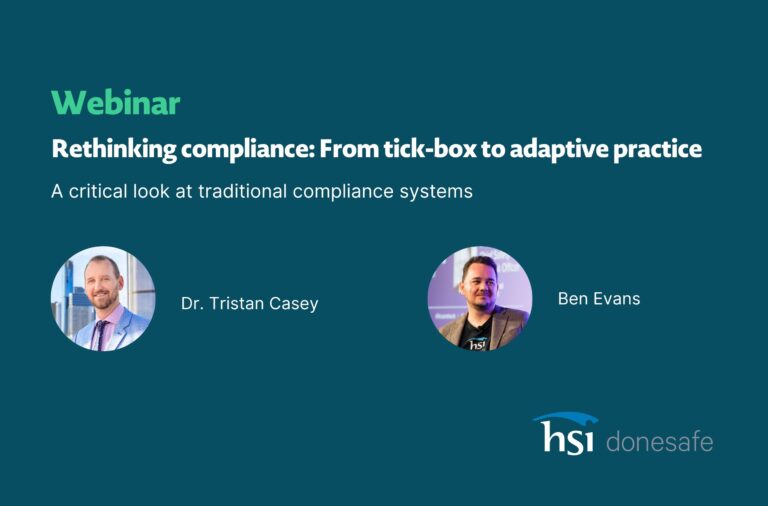
When we think about workplace safety, it’s easy to get caught up in the big events: the accidents, the injuries, the dramatic moments that demand our attention. But what if the key to improving safety isn’t about waiting for the big problems to show up? What if it’s about how we handle the “small” incidents—the near misses, the small hazards, and the everyday things that are easy to overlook?
Reporting small incidents may seem trivial in the grand scheme of workplace safety, but in reality, it’s often the missing link that can make a profound difference. Let’s explore why these minor incidents are the unsung heroes of a safer workplace and how making it easy to report them can lead to a dramatic shift in overall safety culture.
The Power of Small Incidents
In any organization, there are hundreds of small incidents happening every day—slips, trips, equipment malfunctions, or even something as simple as a worker feeling a little off balance. These aren’t major injuries, but they are often early signs of bigger problems brewing. If left unreported or unnoticed, these small events can escalate into something far more serious.
The challenge, however, lies in how we view these incidents. Too often, they’re brushed aside as “no big deal.” But when we take a closer look, we see that these small incidents could be the first indicators of systemic issues that, if addressed early, could prevent far more serious accidents.
Why Do We Ignore Small Incidents?
So, why do so many organizations overlook these small incidents? There are a few reasons. First, the nature of most workplaces doesn’t lend itself to easy reporting. Workers are busy, and the act of reporting can feel like a hassle. The systems in place for reporting incidents might be outdated, confusing, or simply too slow to provide real-time feedback. If employees don’t see immediate benefits to reporting these “small” events, they’re less likely to take the time to do so.
Second, there’s often a cultural aspect at play. In some organizations, there’s a stigma associated with reporting. Employees may feel like they’re being overly cautious or that they’ll be seen as creating unnecessary noise. As a result, they might refrain from reporting small incidents, leading to a lack of data on potential safety risks.
The Big Impact of Small Data
Here’s where the magic happens: the more incidents you can report, no matter how minor they seem, the clearer the picture becomes. By creating a system that encourages easy, fast, and non-punitive reporting, you start to accumulate valuable data. And that data can uncover trends that might otherwise go unnoticed.
Take McDonald’s, for example. They revolutionized their safety approach in partnership with HSI Donesafe by making it easy for employees at all levels to report even the smallest incidents. By switching from a paper-based system to a cloud-based platform, they enabled workers to quickly log and categorize hazards in real time. As a result, they saw a huge spike in reporting—up by 500%. But more importantly, they uncovered a pattern: an ongoing issue with burns from a newly installed grill at several locations.
What seemed like isolated incidents at first turned out to be a widespread issue. This discovery allowed McDonald’s to implement new safety measures and training, leading to a significant decrease in burns. Without the visibility provided by frequent, easily reported incidents, this problem could have gone unnoticed, and the consequences could have been far worse. Learn how a global organization transformed these insights into a safer workplace in our McDonald’s case study.
Creating a Culture of Reporting
The key takeaway here is that safety isn’t just about having a system in place; it’s about embedding a culture where reporting—even the smallest incidents—is encouraged and valued. How do you build that culture? Start by making the process as simple as possible. Workers should be able to report incidents in a way that doesn’t disrupt their workflow. A modern, user-friendly system, like the one McDonald’s implemented, can make all the difference. Safety doesn’t belong in the too-hard basket—especially when simplicity is within reach.
It’s also important to ensure that the reporting system is accessible to everyone—whether they’re executives in the boardroom or frontline workers in the field. When everyone has a stake in reporting and can do so easily, it builds a sense of ownership over safety.
Moreover, feedback is critical. Employees need to see that their reports lead to real change. If they report a minor hazard and it’s addressed quickly, they’re more likely to continue engaging with the system. The culture shifts when workers feel heard, and when they see that their actions have an impact on safety across the organization.
Technology as an Enabler
Technology plays a huge role in making reporting seamless and effective. With the right tools in place, companies can instantly gather data, spot trends, and take action before small incidents turn into major issues. Whether it’s a mobile app or a cloud-based system, the right technology can make reporting a part of the daily routine, not a burden.
A modern system allows for real-time feedback, so managers and safety teams can act on issues as soon as they’re reported. This immediate action helps build trust and reinforces the importance of reporting small incidents.
The Bottom Line
In the world of workplace safety, it’s easy to focus on the dramatic moments. But the truth is, safety is made in the small moments—the little incidents that, when reported, give organizations the insight they need to stay ahead of bigger problems. By making it easy to report even the smallest issues, you not only prevent major incidents but also build a culture where safety is everyone’s responsibility.
In the end, the goal is simple: make reporting a natural part of the workday, empower employees to participate, and use the data to drive real change. Small incidents lead to big insights, and those insights lead to a safer workplace for everyone.
Want to learn more about how McDonald’s used real-time reporting to transform their safety culture? Check out their journey here.
If you’re ready to take your safety programs to the next level and truly see the impact it can have, why not start the conversation? Get in touch with us to explore how HSI Donesafe can help you build a safer, healthier, and more resilient environment for your team. Whether it’s refining your approach or exploring how the right tools can make all the difference, we’re here to help you every step of the way. Let’s prepare you for your safety challenges now, and into the future.
———————————————————————————————————————————————————–
Is making sure your organisation is ready for all future risks important to you? Talk to us today.
Keep your team safe with HSI Donesafe.
Chat with us today.
Share:



